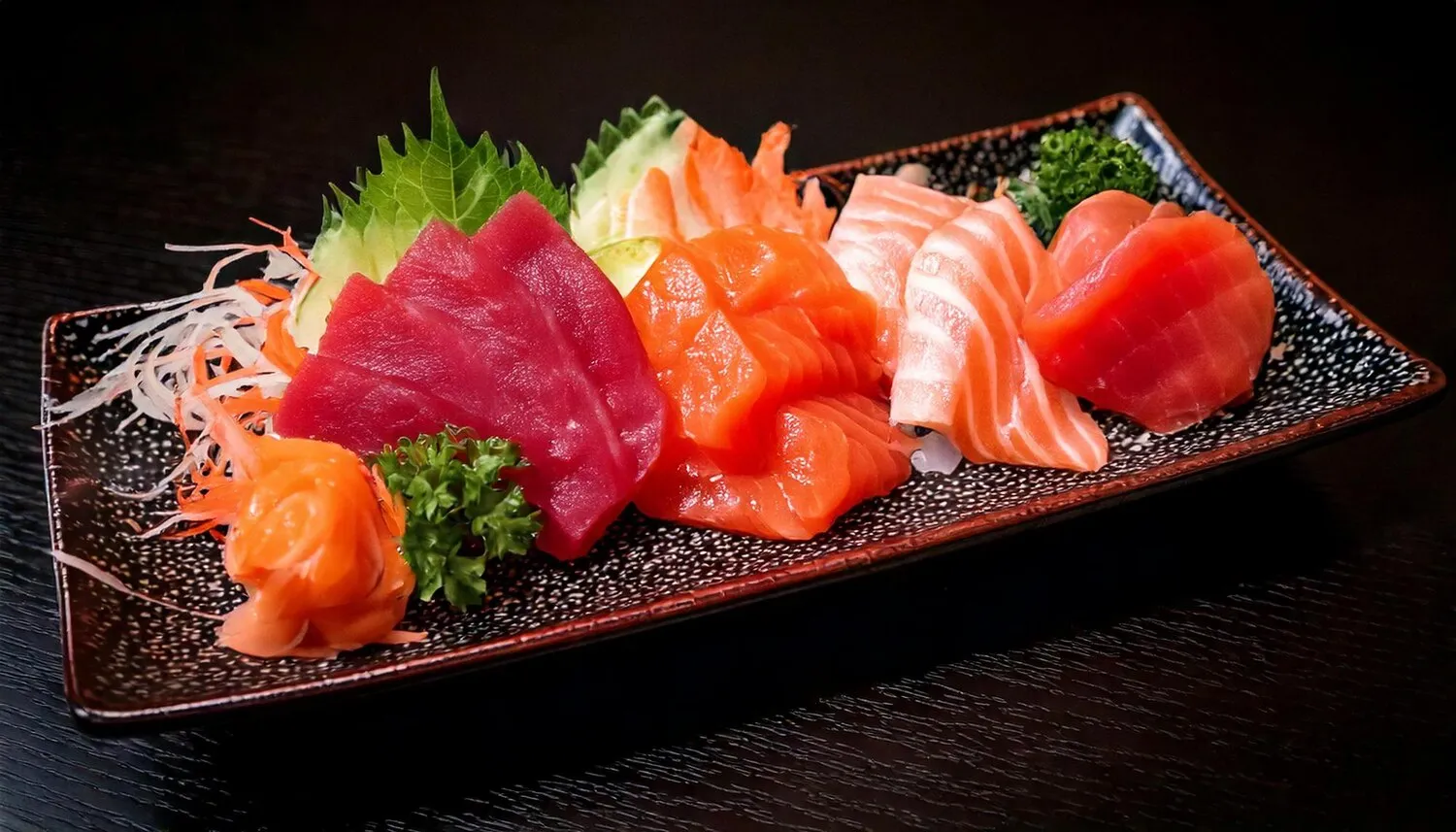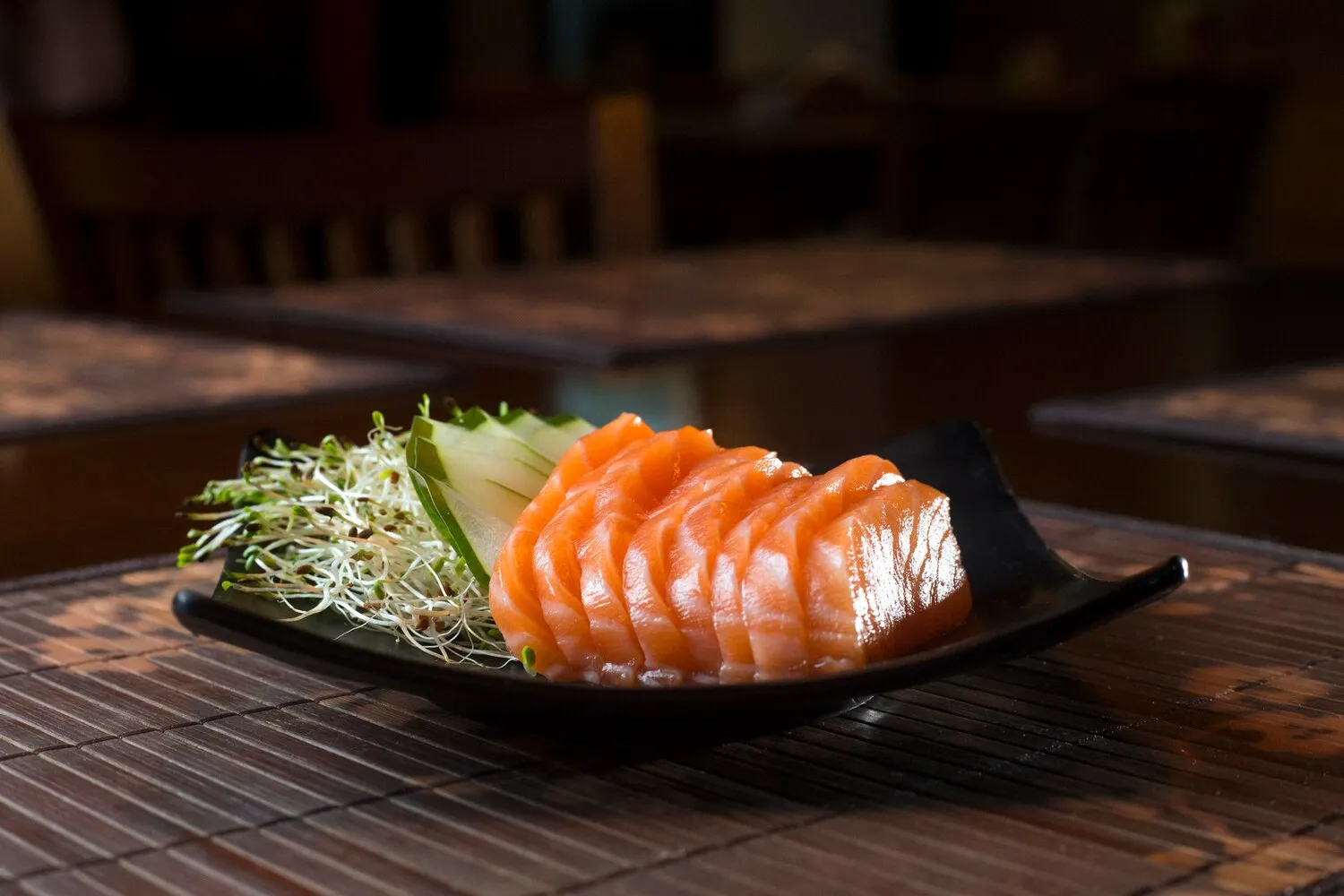
Sashimi
Sashimi is a Japanese delicacy consisting of thinly sliced raw fish or meat, typically served with soy sauce and wasabi.
Nutrition Facts
* The % Daily Value (DV) tells you how much a nutrient in a serving of food contributes to a daily diet. 2,000 calories a day is used for general nutrition advice.
Koko Sushi Restaurant
Sashimi's origins can be traced back to ancient Japan, predating the widespread use of refrigeration. Initially, it was a way to appreciate the freshness and quality of seafood, showcasing the skill of the chef in selecting and preparing the finest cuts. Early forms involved simpler preparations, evolving over centuries alongside improvements in fishing techniques and culinary practices.
Sashimi is deeply embedded in Japanese culinary culture, representing a respect for nature, meticulous preparation, and aesthetic presentation. It is often associated with special occasions and formal dining, reflecting its high status and the chef's artistry.
Freshness is Paramount
The quality and freshness of the fish are of utmost importance. Chefs undergo rigorous training to identify the best seafood and handle it with precision to maintain its integrity.
Artistic Presentation
Sashimi is not just about taste; it's also about visual appeal. Chefs carefully arrange the slices, often using garnishes like seaweed, edible flowers, and carved vegetables to create a stunning presentation that reflects the seasons.
Respect for the Ingredient
Sashimi embodies a Japanese philosophy of minimizing waste and honoring the natural ingredients. Every part of the fish is utilized, either in other dishes or as stock.
Sashimi emphasizes the pure, delicate flavors of the raw fish or meat. The taste profile is clean and refined, allowing the natural sweetness and umami of the ingredients to shine through. Condiments like soy sauce and wasabi are used sparingly to enhance, not overpower, these inherent qualities.
The primary flavor is the natural taste of the fish itself, varying greatly depending on the species. Tuna (maguro) offers a rich, almost buttery flavor, while salmon (sake) has a fatty, slightly sweet taste. White fish like sea bream (tai) are typically milder and firmer. Soy sauce adds a salty, umami depth, while wasabi provides a pungent, sinus-clearing kick that complements the richness of the fish. Other accompaniments like daikon radish or shiso leaf offer textural and aromatic contrasts.
Soy Sauce Etiquette
Dip only the fish, not the rice (if served with rice). Over-soaking can mask the delicate flavor of the fish. Use a small amount of soy sauce to enhance the taste, not overwhelm it.
Wasabi Wisdom
Apply wasabi directly to the fish, not into the soy sauce. This allows you to control the amount and ensures the wasabi's flavor doesn't dissipate in the soy sauce.
Eating Order
Start with the lighter, milder fish (like white fish) and gradually move to the richer, fattier varieties (like tuna). This allows you to fully appreciate the subtle differences in flavor.
Explore additional Sashimi dishes and restaurants
Explore SashimiDiscover top dining spots and culinary experiences in Sassari.
Explore SassariLearn more about the food culture, restaurant scene, and culinary heritage of Italy.
Explore Italy
